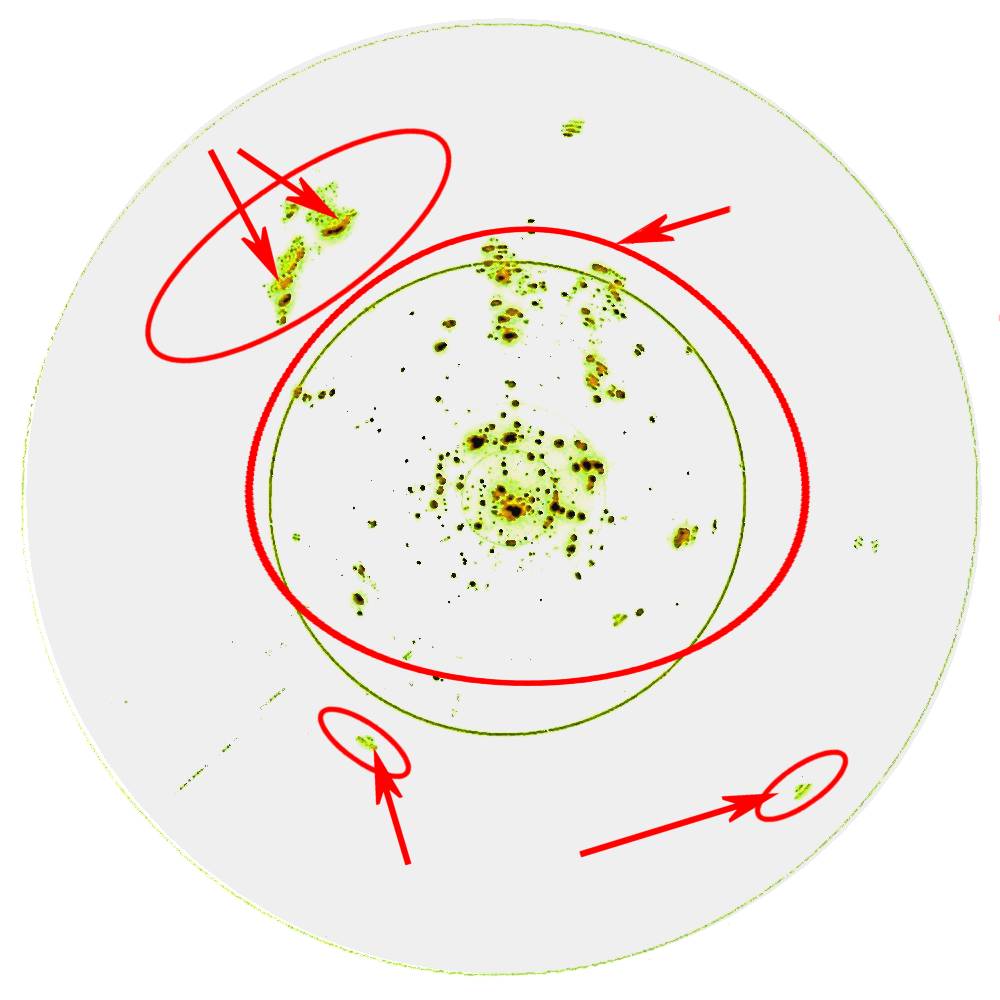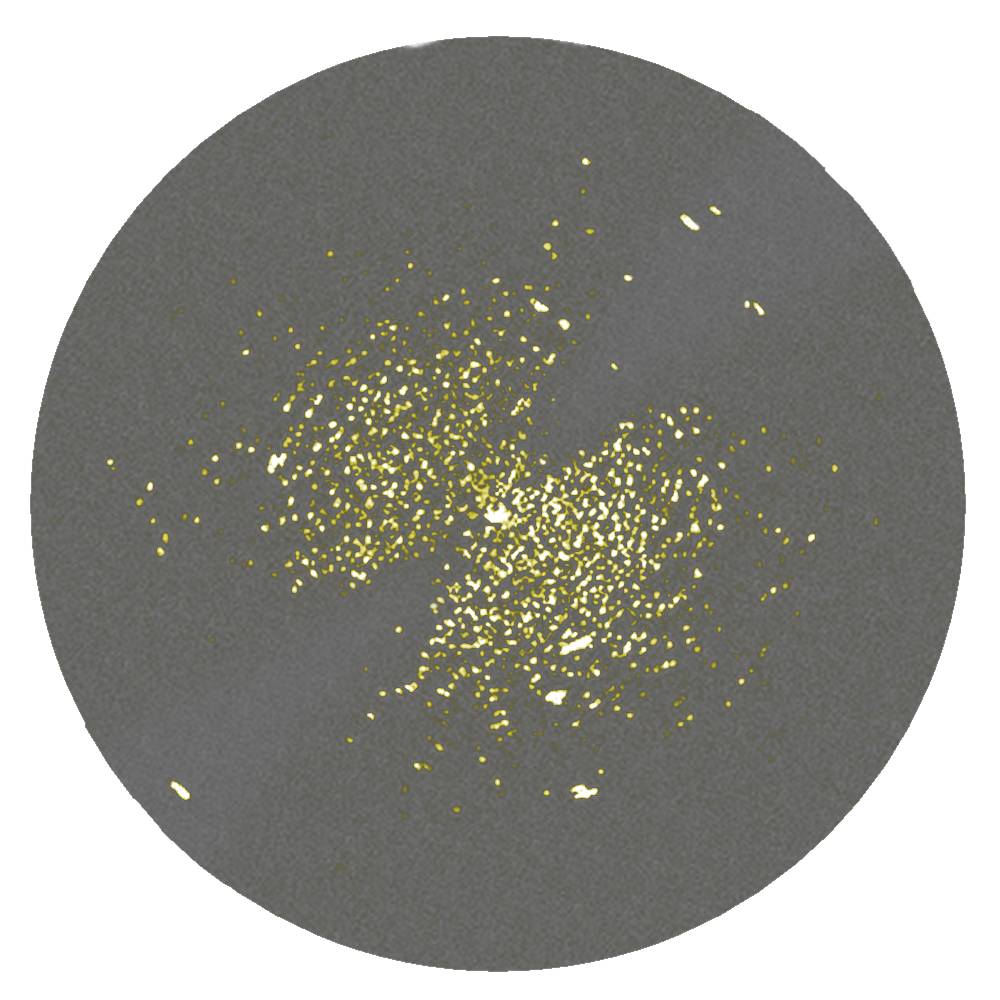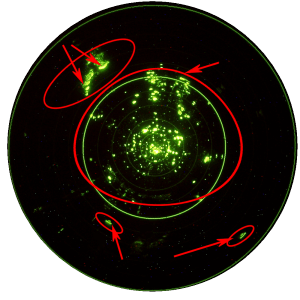Radar Clutter

Figure 1: PPI screen of an ATC-radar with targets and clutter
Radar Clutter
Radar returns are produced from nearly all surfaces when illuminated by radar. Therefore, in competition with the return from an aircraft, there are many sources of unwanted signals. Unwanted signals in a search radar are generally described as noise and clutter. (Noise was discussed earlier in detail concerning the Radar Basics.) Clutter is the term used and includes ground returns, sea returns, weather, buildings, birds and insects. The definition of clutter depends on the function of the radar. Weather is not clutter in a weather detecting radar.
Since aircraft usually move much faster than weather or surface targets, velocity-sensitive radar can eliminate unwanted clutter from the radar indicator. Radar systems that detect and process only moving targets are called Moving-Target Indicators (MTI).
The basic types of clutter can be summarized as follows:
- Surface Clutter – Ground or sea returns are typical surface clutter.
Returns from geographical land masses are generally stationary, however, the effect of wind on trees etc means that the target can introduce a Doppler Shift to the radar return. This Doppler shift is an important method of removing unwanted signals in the signal processing part of radar system. Clutter returned from the sea generally also has movement associated with the waves.
- Volume Clutter – Weather or chaff are typical volume clutter.
In the air, the most significant problem is weather clutter. This can be produced from rain or snow and can have a significant Doppler content.
- Point Clutter – Birds, windmills and individual tall buildings are typical point clutter and are not extended in nature. Moving point clutter is sometimes described as angels. Birds and insects produce clutter, which can be very difficult to remove because the characteristics are very much like aircraft.
Clutter can be fluctuating or non-fluctuating. Ground clutter is generally non- fluctuating in nature because the physical features are normally static. On the other hand, weather clutter is mobile under the influence of wind and is generally considered fluctuating in nature.
Clutter can be defined as homogeneous if the density of all the returns is uniform. Most types of surface and volume clutter are analysed on this basis, however, in practice this simplification does not hold good in all cases. Non-homogeneous clutter is non uniform clutter where the amplitude of the clutter varies significantly from cell to cell. Typically non-homogeneous clutter is generated by tall buildings in built up areas.

Figure 2: Sea-Clutter on a PPI-Scope
Sea-Clutter
Sea-clutter are disturbing radar-echoes of sea wave crests. This clutter gets also a Doppler- speed by the wind. This means, the scenario „moves away”, i.e. changes with time, while for ground clutter it stays the same. Therefore, in practice, Sea-clutter is very difficult to control without some loss in detection.
Sea-Clutter can be seen here in the picture. The wind comes either from about 310° (NO) or from the opposite direction. (Unfortunately, whether the Doppler frequency is positive or negative cannot be recognized on the PPI-Scope.)
But this region, in which the radial speed of the waves is very small, is „cleaned” by the MTI system very clearly.
Cluttermap
This method be left of the time in which an operator or „radio-locator” still sat in front of the PPI-Scope. This is only used at the most today, if all other MTI-devices have failed: A graphic mapping of the clutter zone around radar site, the operator has to remember this map to still locate the target inside the clutter zone perhaps anyway.
Statistical Method With Cluttermap
However, this cluttermap can be managed also electronically. The values of the echoes are stored as a data word for every bearing angle and every rangecell there. Only if the data word has changed fundamentally, the echo-blip is shown on the screen.


